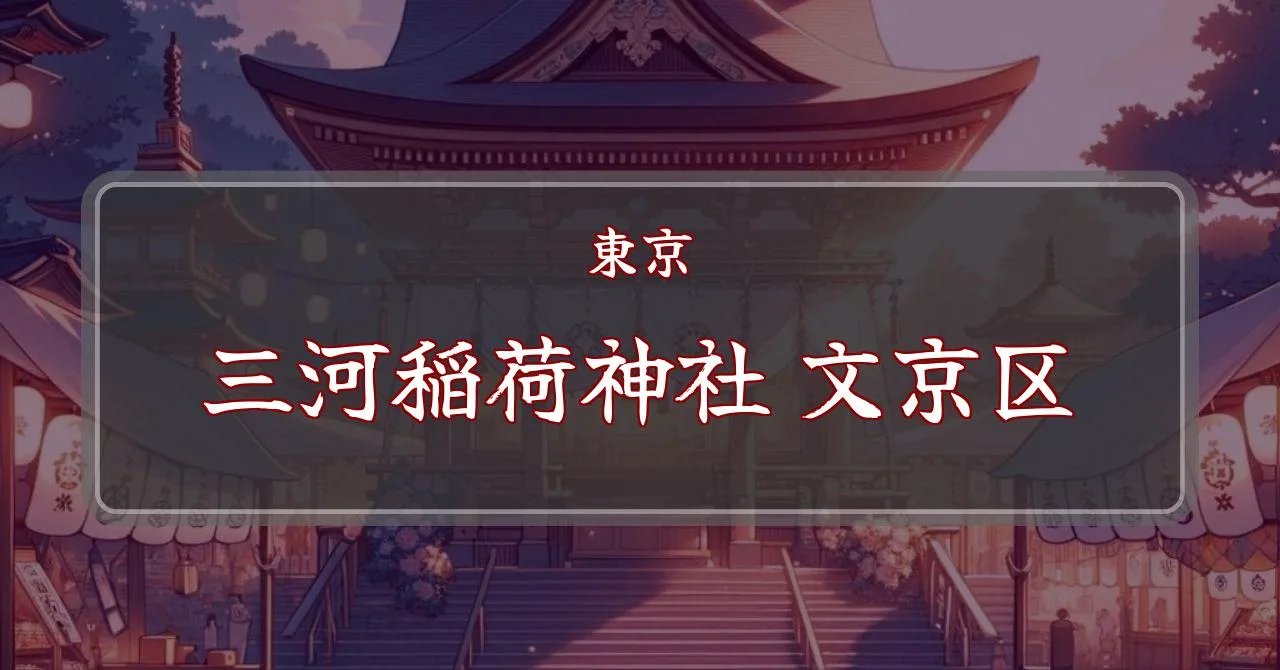徳川家康ゆかり!三河稲荷神社例祭2025
イベントの概要
東京都文京区に鎮座する三河稲荷神社では、2025年度も例祭が執り行われます。徳川家康公が江戸開府の際に、自身の守り神として信仰していた愛知県豊田市にある三河稲荷神社の末社を起源とする由緒ある神社です。鮮やかな三原色の提灯と赤い目をした狛犬が特徴的な境内では、古くからの伝統を守りつつ、地域住民と共に賑やかな祭りが繰り広げられます。例祭当日は、神事や地域住民による様々な催しなどが予定されており、歴史と伝統を感じながら、地域一体となって春の訪れを祝う、温かく活気あふれる一日となるでしょう。 詳細なスケジュールやイベント内容は、神社ホームページ等でご確認ください。 徳川家康公ゆかりの神社で、歴史と伝統に触れ、春の息吹を感じてみませんか?
基本情報
- 開催日: 2025年度 例祭の日程は、三河稲荷神社の公式ウェブサイト等でご確認ください。
- 開催時間: 2025年度 例祭の時間は、三河稲荷神社の公式ウェブサイト等でご確認ください。
- 住所・開催場所: 〒113-0033 東京都文京区本郷2-20-5 三河稲荷神社
- アクセス: 東京メトロ丸ノ内線・都営地下鉄大江戸線「本郷三丁目」駅より徒歩約4分
主なイベント
三河稲荷神社例祭では、神事や地域住民による様々な催しを通して、歴史と伝統、そして春の訪れを祝います。 詳細な内容は年度によって異なる場合がございますので、神社の公式ウェブサイト等で最新情報をご確認ください。
例祭神事
例祭の中心となる神事では、五穀豊穣や家内安全などを祈願します。神職による厳かな儀式は、古くからの伝統を受け継ぎ、神聖な雰囲気に包まれます。参列者は、神職の奏上する祝詞や神楽を拝聴し、神様のご加護を祈念します。 神事の具体的な内容は、神社の公式発表をご確認ください。
- 内容:神職による神事(祈願、祝詞奏上、神楽など)
- 目的:五穀豊穣、家内安全、地域安全などの祈願
地域住民による催し
例祭当日は、地域住民が主体となって様々な催し物が企画されます。 屋台の出店や、地域独特の伝統芸能の披露など、地域住民の活気と一体感を肌で感じられる機会です。 子供たちが楽しめる企画も用意されている可能性がありますので、家族連れでも安心して楽しめます。具体的な内容は、神社の公式発表や地元の広報誌などでご確認ください。
- 内容:屋台の出店、伝統芸能の披露、子供向けイベントなど(内容は年度によって異なります)
- 目的:地域住民の交流促進、地域活性化、祭りの賑わい創出
その他
その他、神社境内では、徳川家康公ゆかりの神社としての歴史や、境内にある特徴的な狛犬や提灯などに関する説明パネルなどが設置されている可能性があります。境内を散策しながら、歴史や文化に触れることもできます。
- 内容:境内散策、歴史・文化に関する展示など
- 目的:神社の歴史や文化への理解を深める
アクセス方法
三河稲荷神社へのアクセスは、公共交通機関が便利です。東京メトロ丸ノ内線・都営地下鉄大江戸線「本郷三丁目」駅から徒歩約4分です。JR総武線・都営地下鉄三田線「水道橋」駅からも徒歩でアクセスできますが、本郷三丁目駅からのルートの方が近いです。
- 東京メトロ丸ノ内線・都営地下鉄大江戸線「本郷三丁目」駅下車 徒歩約4分
駐車場情報
三河稲荷神社には、専用の駐車場がありません。近隣のコインパーキングをご利用ください。ただし、例祭期間中は混雑が予想されますので、公共交通機関のご利用を推奨します。
- 近隣のコインパーキングをご利用ください。
- 例祭期間中は公共交通機関の利用を推奨します。




